Toshiba 46YL863 Review
Toshiba 46YL863
Toshiba’s 46YL868 is ferociously well specified and exceedingly glamorous. But is it also any good?
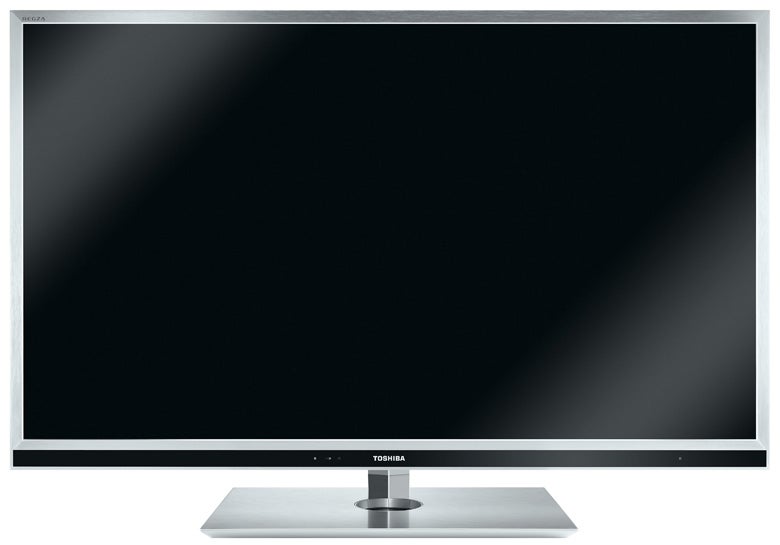
Verdict
Pros
- Recent price cuts have made it a bargain
- Excellent 2D and remarkably detailed 3D performance
- Gorgeous design
Cons
- Places online service needs more content
- Care needed to rein in backlight issues
- 3D prone to crosstalk noise
Key Specifications
- Review Price: £999.00
- 46in LCD TV with edge LED lighting
- active 3D playback
- Toshiba Places online service
- Multimedia playback support
- CEVO Engine processing
At its recent 2012 product launch, Toshiba had plenty of new TVs to show off. But these imminent new sets did not include any replacements for Toshiba’s current flagship TVs, the WL863 and YL863 models.
Driven by Toshiba’s proprietary, high-powered CEVO Engine processing, the 2011-launched YL853 and WL853 models represent the brand’s most concerted attempt to bring some of the huge processing power used in its Japanese Cell Regza TVs to the UK. So presumably Toshiba believes that for now, at least, these flagship TVs are still able to hold their own against the newer sets starting to arrive on UK shores from rival brands.
Naturally we decided to put this Toshiba theory to the test by putting one of these flagship sets, the Toshiba 46YL863, through its paces.
The first thing that strikes you about this 46in LCD TV is how good looking it is. Toshiba has employed the design talents of the Jacob Jensen Design Studio for these top tier TVs, and the results are genuinely lovely. Its silver, metallic finish, elegant lines and extremely trim bezel and rear both shout ‘flagship TV’ at the top of their lungs. What’s more, the brushed aluminium chassis is remarkably well built.
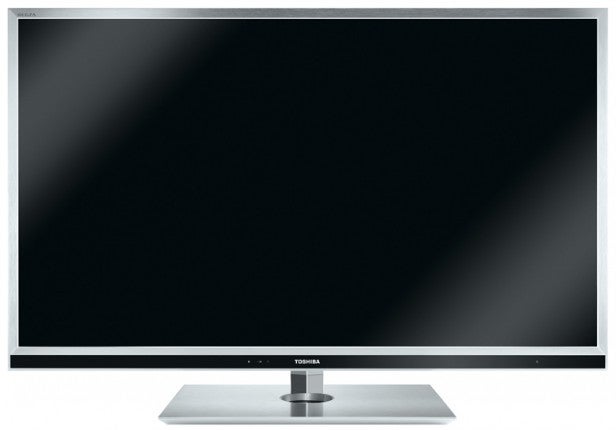
The 46YL863 continues to live up to its flagship status with its connections. Its got four HDMIs for digital, HD and 3D video feeds, which should be enough to cope with even the most extreme user demands. Multimedia playback, meanwhile, is supported by two USBs, a LAN port and, best of all, built-in Wi-Fi.
The USBs can be used for playing back a healthy though not exhaustive selection of music, video and photo file types from USB storage devices, while the Wi-Fi/LAN options are there to access files stored on networked DLNA-enabled PCs or for going online with Toshiba’s Places ‘smart TV’ system (which we’ll come back to later).
The inclusion of Wi-Fi as standard is significant, since all the research we’ve seen shows clearly that consumers are hugely more likely to use a smart TV’s online functionality if they can do so without having to hardwire their TV into their network.
There is one further significance to the LAN connectivity too, in that it’s there as required support for the set’s inevitable Freeview HD tuner. The 46YL863 also, intriguingly, has a satellite tuner on board. But since this isn’t compatible with the ‘Freesat’ packaging exclusive to the UK, it’s of very limited interest on these shores, so we won’t dwell on it.
The CEVO Engine inside the 46YL863 should on paper be able to deliver much more powerful and, crucially, speedy picture processing than you get with other Toshiba sets, hopefully leading to boosts in everything from colour and detail to contrast and motion response. Particularly eye-catching is the way the CEVO Engine can control an impressively sophisticated ‘local dimming’ system for the edge LED lighting.
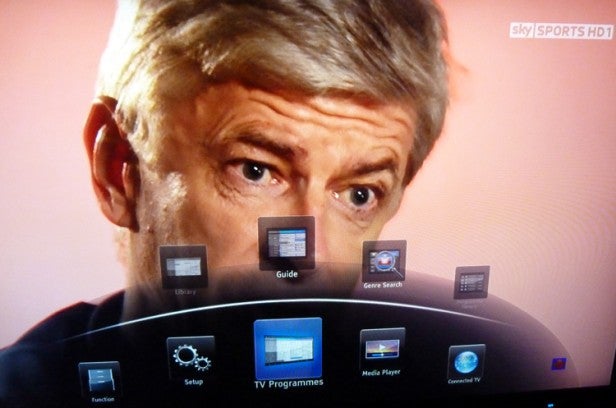
Obviously local dimming with edge LED lights is not quite as accurate when it comes to localised levels of brightness as it tends to be with local dimming on direct LED TVs. But we’ve certainly seen edge LED TVs with local dimming start to deliver much more sophisticated results in recent months than the first locally dimmed models tended too, so hopefully the CEVO Engine’s power will continue this positive trend. Certainly the set’s 7,000,000:1 contrast ratio claim is mighty impressive.
The 46YL863’s powerful processors further enable it to offer a very unusual set up feature: an auto calibration system. Cough up around £250 on an optional TPA-1 package, and you can bag yourself a colour meter that plugs into one of the TV’s USB ports and then hangs over the screen so that it can take readings from a series of built-in test signals and automatically calibrate your TV’s settings.
We tried this system out, and for the most part were impressed by its cleverness (while being rather less impressed by its rather high cost). Colour tones post calibration seemed mostly accurate, and there was an impressive amount of detail and colour subtlety in the image.
However, it did seem to us that reds were a touch overcooked, and we have a sneaky feeling that many mainstream users will find the post-calibration image a bit too muted for comfort. Certainly there’s a sense that the ‘accurate’ pictures are only using a small amount of the screen’s potential ‘juice’.
Perhaps it’s as well, then, that the 46YL863 has plenty of tools at its disposal for tweaking pictures manually as well. These include a pretty wide-ranging colour management system, gamma controls, and white balance shifting. Not to mention multiple noise reduction and motion processing options.
These latter two tools should be handled with considerable care, as ever with heavy-duty processing tools. Though to be fair, presumably thanks to the CEVO Engine’s power, we generally found both the noise reduction and motion processing able to deliver their benefits without causing as many unwanted side effects as they tend to produce on Toshiba’s less powerful TVs.
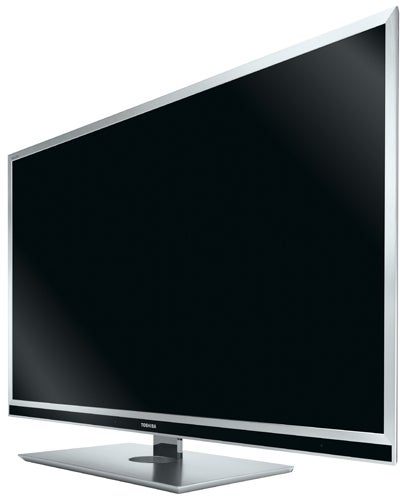
The motion tools in particular are definitely worth experimenting with, at least on their lower power levels. Do make sure, though, that all noise reduction systems are deactivated for HD viewing if you want to enjoy the full impact of HD sources.
Heading into Toshiba’s Places online service before getting stuck into its picture and sound performance, we’re struck by the same mixed feelings experienced with other current Toshiba TVs.
On the upside, the presentation is delightful, thanks to the rich use of graphics and bold colours, and sensible grouping of services into social, video, and music ‘places’. Kudos, too, to Toshiba’s attempts to allow individual users to adapt the presentation and order of the Places systems to their particular needs by supporting multiple separate user ‘accounts’. The TV even carries a built-in camera with face recognition, so that the TV can automatically detect who’s using Places at any given time, and adjust its ‘front end’ accordingly.
It’s a pity this feature is hamstrung by the dismal quality of the camera, which frequently attributes the wrong name to the wrong detected face. But there you go. At least the idea’s a good one!
The biggest problem with Places is that it just doesn’t have enough content. The list of potentially interesting fare looks like this: Acetrax, Facebook, the BBC iPlayer, YouTube, Aupeo, Viewster, Flickr, Daily Motion, Funspot, plus the Box Office 365, Cartoon Network, and HiT Entertainment subscription services. This is a pretty short list when you think of the hundred-plus services and apps now being carried by some of Toshiba’s rivals – and the paucity of content is merely emphasised by the attempt to divide what’s there into separate sections.
Basically, we can only hope Toshiba gets very busy indeed at adding more services as we slide through 2012.
The slightly disappointed feeling raised by Places is quickly dispelled, thankfully, by the 46YL863’s picture performance. Starting out with a variety of HD 2D sources from Blu-ray, the Freeview HD tuner, and a connected Sky HD box, we were hugely impressed by almost everything we encountered.
Colours, for a start, are little short of explosive, bursting off the screen with the sort of punch and vigour achieved by only the very best rival LCD TVs. What’s even more startling about this is that the vibrancy is delivered without making colour tones look unbalanced, uncomfortable, unnatural or short of tone/blend finesse. In fact, colours are delivered without a ‘stripe’ or ‘blotch’ in sight, providing stark evidence of the power of the CEVO Engine.
This colour subtlety is joined, too, by an immense eye for detail and textural nuance, making many HD images look breathtakingly intense and immersive. Indeed, sometimes even 2D images look 3D thanks to the sense of depth created by the sheer accuracy of the Toshiba 46YL863’s HD images.
It’s great to find, too, that the exceptional clarity of the picture doesn’t fall down when things get moving. The panel clearly has a fast native response time (it’s a native 200Hz job with four times blinking backlight, producing a claimed ‘800Hz’ speed figure), for even if you don’t bother with the motion processing circuitry there’s only the very slightest loss of resolution over moving objects. And if you apply the motion circuitry on its lowest setting the blurring becomes even more reduced without, crucially, the picture starting to look processed or excessively ‘video-like’.
More good news finds the intensity and brightness of the colours being underpinned by one of the best black level responses yet seen from an edge LED TV. Provided you don’t succumb to the undeniable temptation of running the set’s backlight too high, dark scenes are only very slightly affected by any greyness. Even better, there’s markedly less trouble from backlight inconsistencies than we’ve noted on a number of Toshiba’s other current TVs. Yes, the corners can look just slightly brighter than the rest when watching really dark scenes, but it’s sufficiently subtle if you’re sensible with the backlight level as to be only very occasionally distracting.
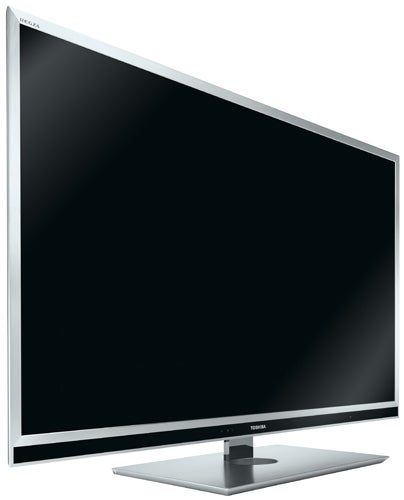
Turning our attention to standard definition – which still plays a big part in most people’s TV lives – the CEVO Engine continues to earn its corn. For the 46YL863 does a quite excellent job of remapping standard def fare to the screen’s full HD resolution, adding obvious clarity and detail while simultaneously processing away source noise. Even the poorest quality Freeview standard definition channels end up looking half decent on the 46YL863 – an achievement that borders on the miraculous, at times.
CEVO Engine’s presence is also joyously felt to some extent in the 46YL863’s 3D pictures. The available processing power allows Toshiba to apply its Resolution detail-boosting system even to HD 3D sources – and the impact it has is stunning. Basically, it makes 3D pictures look so sharp and detailed that ‘ordinary’ HD just doesn’t look like HD any more!
Philips’ 3D TVs are able to deliver a similar effect, and we saw enough during our recent visit to Sony in Japan to know that some of their 2012 3D TVs will offer HD 3D clarity boosting too. But the key thing about Toshiba’s system – apart from the fact that it works so well – is that it’s available now on a 46in TV that costs just £999.
But… there had to be a but, didn’t there? Unfortunately the astounding clarity of the 46YL863’s 3D images is sadly undermined by that dreaded nemesis of active 3D technology: crosstalk. The double ghosting phenomenon appears disappointingly readily on this Toshiba set, especially when watching ‘side by side’ 3D sources like Sky’s 3D channel.
It’s hard to understand why this is happening given the power that’s behind the 46YL863’s images, but crosstalk is definitely there for all to see.
Let’s wrap up, though, on the high the 46YL863 overall deserves. For extremely unusually for an exceptionally slim TV, it’s capable of producing a really convincing sound performance. Playing a big role in this is a built-in subwoofer, which ups the TV’s ‘rumble’ response while also taking a lot of pressure off the main speakers, leaving them freer to produce a cleaner, more open and more detailed mid and treble range.
Verdict
The 46YL863 is a genuinely important product for Toshiba. Over the past few years the brand has become increasingly associated with the relatively low end of the TV market, earning a reputation for delivering good quality budget sets. But with the 46YL863 it’s made a serious bid for the high end again – and aside from some 3D crosstalk, the results are spectacular. A feat made all the more impressive by the fact that you can now get this ambitious TV for less than a grand.
How we test televisions
We test every TV we review thoroughly over an extended period of time. We use industry standard tests to compare features properly. We’ll always tell you what we find. We never, ever, accept money to review a product.
Trusted Score
Score in detail
-
Features 9
-
3D Quality 8
-
Value 9
-
Design 10
-
2D Quality 9
-
Sound Quality 8
Features
| Size (Inch) | 46in |
| Display Type | LED |
| Max. Resolution | 1920 x 1080 |
| Full HD 1080p | Yes |
| Digital Tuner | Yes |
| Freeview HD | Yes |
| Freesat HD | No |
| 3D Ready | Yes |
| Contrast Ratio | 7,000,000:1 |
| Refresh Rate (Hertz) | 800 (200 plus 4x blinking backlight)Hz |
Connectivity
| HDMI | 4 (v1.4) |
| Component | 1 |
| Composite | 1 |
| Scart | 1 (RGB) |
| Digital Audio Out | 1 |
| Headphone | 1 |
| Charging/Computer Connection | 2 |
| Ethernet | 1 |
| WiFi | Yes (built-in) |
Physical Specifications
| Height (Millimeter) | 653mm |
| Width (Millimeter) | 1067mm |
| Depth (Millimeter) | 27.2mm |

